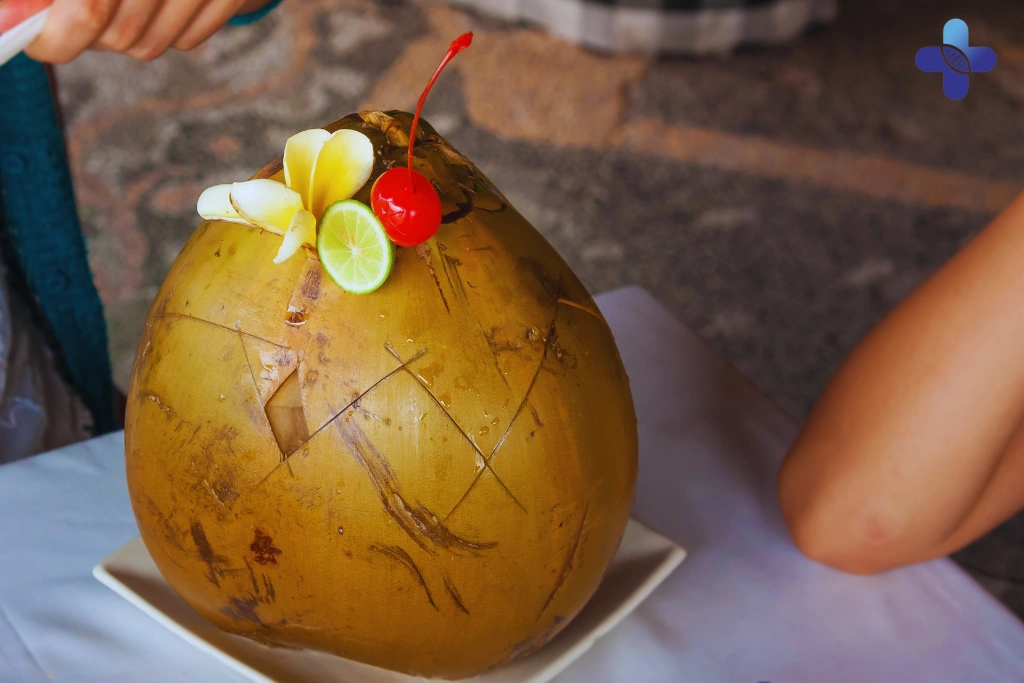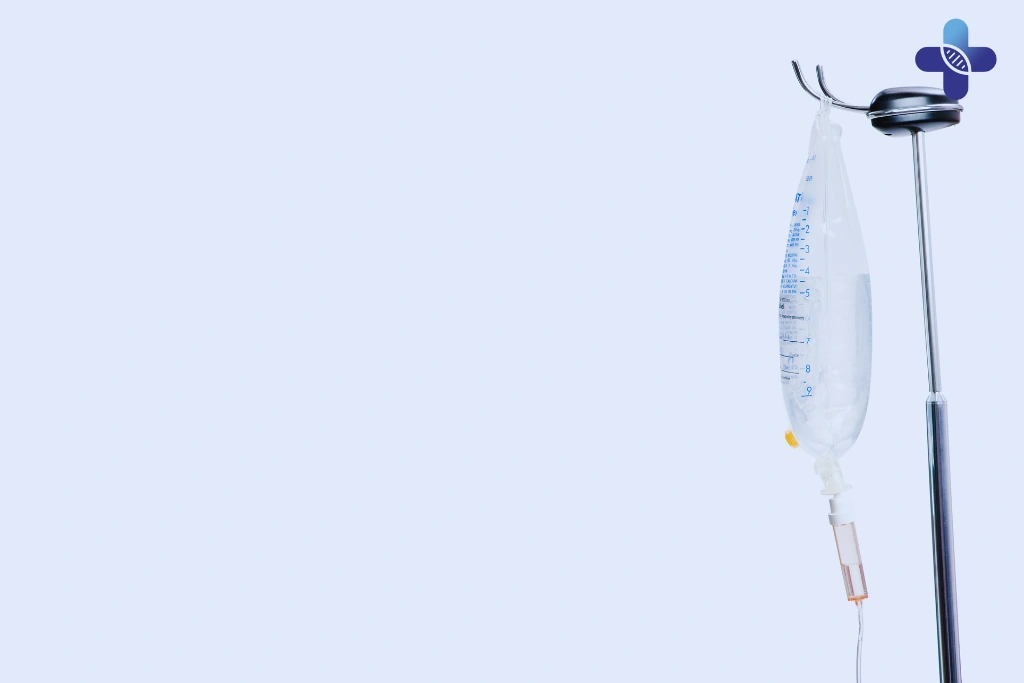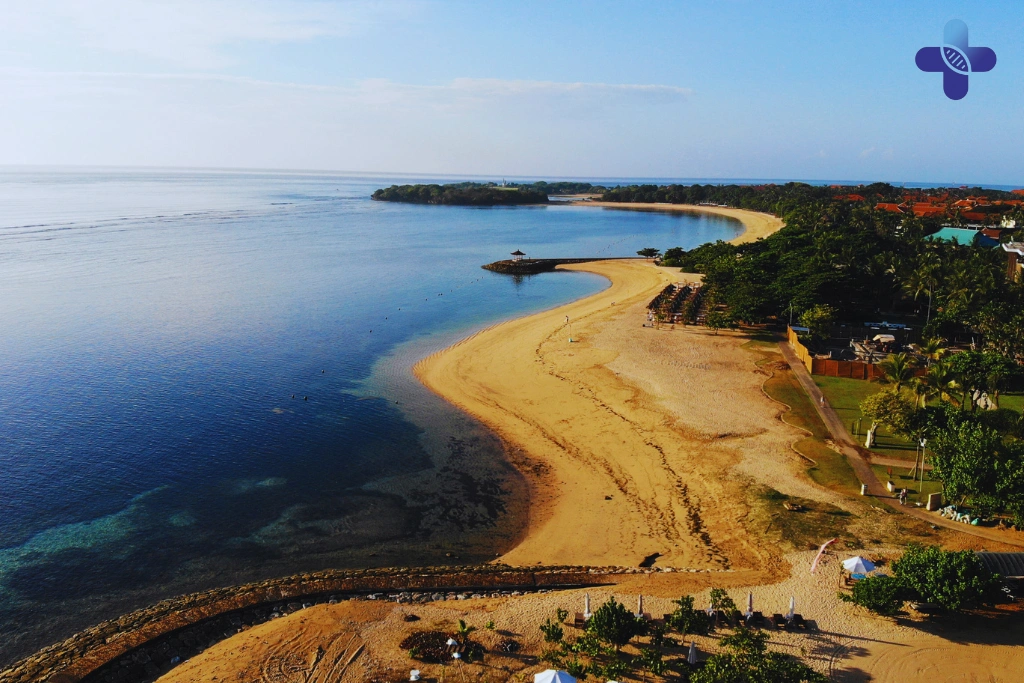You’re in Bali, feeling drained, dizzy, or weak—and someone offers you fresh coconut water while another suggests an IV Drip. Both sound hydrating, but which one truly works faster and better when your body is running on empty? In this guide, we’ll break down the facts behind IV Drip vs. Coconut Water using medical insight, so you can choose the right hydration method for your situation. Whether you’re battling heat exhaustion, Bali Belly, or a post-party crash, knowing how each method works could make the difference between wasting a day and bouncing back within hours.
IV Drip vs. Coconut Water: Which is The Best Rehydration Method in Bali?

You’re dehydrated in Bali—sweaty, lightheaded, and maybe recovering from Bali Belly or a long night out. A friendly local hands you a fresh kelapa muda, swearing by its natural power. But then a travel-savvy friend recommends a mobile IV Drip from a trusted Medical Clinic in Bali. Both options promise relief, yet each works through entirely different mechanisms. So how do you decide which one your body truly needs?
In this article, we’ll provide a clear, science-based comparison between IV Drip vs. Coconut Water—no hype, no judgment. We’ll highlight when coconut water is perfect for light dehydration, and when only a professional-grade IV from a licensed Bali Medical Clinic will do. Whether you’re a health-conscious traveler or just want to bounce back fast, this guide will help you choose the safest and most effective way to rehydrate in Bali.
The Local Champion: Coconut Water (“Nature’s Isotonic Drink”)

The Science – What’s Inside?
Coconut water, or kelapa muda, has earned its reputation as “nature’s isotonic drink” for good reason. Composed mostly of water, it also contains natural sugars like fructose and glucose, along with a variety of essential electrolytes. Among these, potassium stands out—just one coconut can deliver more potassium than a banana, which is crucial for maintaining healthy nerve and muscle function.
This high potassium content makes coconut water an excellent choice for replenishing mild electrolyte loss, especially after sweating or exercising under Bali’s tropical heat. Many visitors turn to it as a refreshing, nutrient-rich drink, and it’s easily found across the island. While it’s a wonderful tool for everyday hydration, it’s important to know how it works inside the body before relying on it in more severe cases.
How It Works: The Oral Rehydration Path
When you drink coconut water, your body must first process it through the digestive system—starting from the stomach, into the small intestine, before its nutrients and fluids are absorbed into the bloodstream. This is a normal process for all oral fluids, including water, juices, or oral rehydration salts (ORS). It works well when the gut is healthy and functioning optimally.
However, if you’re experiencing gastrointestinal issues like nausea, vomiting, or diarrhea (as with Bali Belly), this pathway becomes significantly less efficient. Even the best Medical Clinic in Bali would recommend caution with oral rehydration in such situations. The slow absorption rate can delay recovery, and fluids may not stay down long enough to provide full benefit—especially important when you are trying to recover after Bali Belly.
The Verdict: When Is Coconut Water Your Best Friend?
Coconut water shines in mild situations. It’s the perfect option for light dehydration after yoga, a beach walk, or just staying refreshed during Bali’s hot afternoons. It hydrates gently while delivering natural electrolytes and a small amount of energy from sugars. Plus, it’s delicious and widely available—making it a beloved hydration staple for both locals and travelers.
For everyday use or mild physical exertion, coconut water is a smart, nature-based choice. Many Bali Medical Clinics support the use of coconut water as part of a balanced hydration plan, especially if your symptoms are mild and you’re not experiencing vomiting or high fever. But when dehydration becomes more than just thirst, the limitations start to show.
Its Key Limitations
Despite its many benefits, coconut water isn’t a cure-all. Its sodium content is relatively low, which can be problematic since sodium is a key electrolyte lost during heavy sweating, vomiting, or diarrhea. This makes it less effective in restoring true fluid balance in cases of moderate to severe dehydration.
Moreover, the oral route limits its usefulness when the stomach is sensitive or the digestive tract is impaired. For example, during heat exhaustion or gastrointestinal illness, relying solely on coconut water could delay proper recovery. In such cases, the team at a certified Medical Clinic Bali would likely recommend a faster, more controlled approach—such as intravenous hydration.
The Medical Powerhouse: Intravenous (IV) Hydration

The Science – What’s Inside?
Intravenous (IV) hydration therapy uses a sterile saline solution that is isotonic—meaning it has the same salt concentration as your blood. This allows your body to absorb it efficiently and safely. Each IV drip is carefully formulated with the correct levels of sodium and chloride, making it ideal for restoring fluid balance rapidly. Most medical-grade solutions also include potassium and other electrolytes to support nerve function, heart rhythm, and energy levels.
In clinical settings, especially at a trusted Medical Clinic Bali, optional additions like B-complex vitamins, vitamin C, magnesium, and zinc can be included in the drip to enhance recovery. These customizations are especially helpful for individuals dealing with fatigue, immune suppression, or nutrient loss caused by vomiting, diarrhea, or alcohol intake. The result is a highly controlled, scientifically precise method of rehydration that’s designed to give your body exactly what it needs.
How It Works: The Direct-to-Bloodstream Advantage
Unlike coconut water or ORS, IV fluids bypass the digestive system entirely. They are delivered directly into your bloodstream through a vein, allowing for 100% bioavailability. This means your body absorbs every drop of fluid and nutrient almost instantly, without the delays or losses associated with oral hydration. The effects are often felt within minutes—especially in cases of dizziness, weakness, or extreme dehydration.
This direct delivery is what makes IV therapy the preferred option for medical professionals in treating moderate to severe dehydration. At any qualified Medical Clinic in Bali, the process begins with a consultation and vital sign assessment to ensure safety. Once the IV is administered, most patients experience rapid relief, making it the fastest and most effective rehydration method available on the island.
The Verdict: When Is an IV Drip Medically Necessary?
IV hydration is the gold standard for situations where oral intake is no longer effective or safe. If you’re suffering from Bali Belly, a bad flu, heat exhaustion, or a severe hangover, your body has likely lost a significant amount of fluids and electrolytes that oral drinks can’t replace fast enough. In these cases, time is of the essence—and IV therapy provides near-instant results.
For travelers feeling faint, unable to eat or drink, or experiencing prolonged nausea and diarrhea, booking a session at a Bali Medical Clinic is a smart move. It’s not just about comfort—it’s about restoring your body’s balance efficiently and safely, so you can enjoy your time in Bali without the burden of lingering symptoms. Understanding the dangers of dehydration is key to making the right choice.
Head-to-Head: A Clear Comparison Table
When deciding between coconut water and an IV drip, it’s important to understand that you’re not comparing equals—you’re comparing tools meant for different levels of dehydration. Coconut water is natural, nourishing, and excellent for mild hydration, while IV Drip is a clinical solution designed for faster, more targeted intervention. The right choice depends on the severity of your condition and how quickly you need to recover.
The table below highlights the key differences between the two options. From absorption rate to effectiveness during nausea, the contrast is clear. A good Medical Clinic in Bali will often encourage coconut water as part of daily hydration, but will recommend IV therapy when your symptoms demand immediate action—especially during Bali Belly, severe fatigue, or heat exhaustion.
| Feature | Coconut Water (Oral) | IV Drip (Intravenous) |
| Hydration Speed | Slow (Hours) | Very Fast (Minutes) |
| Absorption Rate | Partial (<70%, reduced when sick) | 100% (Complete) |
| Electrolyte Balance | High Potassium, Low Sodium | Medically Balanced |
| Effectiveness When Nauseous | Low (hard to drink) | Very High (bypasses stomach) |
| Best Use Case | Mild Dehydration / Prevention | Moderate–Severe Dehydration / Rapid Recovery |
Ultimately, both options have their place in your Bali wellness toolkit. Coconut water is perfect for sipping after a beach yoga class, while an IV drip from a professional Medical Clinic Bali is the go-to when your body needs urgent support. Choosing the right tool for the job can mean the difference between losing a day and reclaiming it.
The Final Conclusion IV Drip vs. Coconut Water: A Doctor’s Guide to Rehydration in Bali

Think of it this way: coconut water is like a fantastic rain jacket for a light shower—refreshing, natural, and perfect for mild conditions. But when you’re caught in a tropical storm of dehydration—whether from Bali Belly, heat exhaustion, or a brutal hangover—you’ll need professional-grade gear. That’s where IV hydration steps in. It’s fast, targeted, and designed to restore your body at the cellular level, without relying on your digestive system to cooperate.
Both solutions serve a purpose. Coconut water is excellent for maintaining hydration throughout the day, especially if you’re healthy and active. It’s a favorite at wellness cafes and yoga retreats for good reason. But when your symptoms go beyond thirst—like dizziness, weakness, or inability to keep fluids down—it’s time to visit a trusted Medical Clinic in Bali. That’s when science needs to take over from nature.
If you’re suffering from more than just simple thirst, and are experiencing dizziness, weakness, or nausea, your body needs a medical-grade solution. Our Medical Rehydration IV Drips provide the fastest, most effective path back to feeling your best. Book a session with our Bali Medical Clinic team and feel the difference—especially if you’ve been outdoors and haven’t properly handled the Bali heat.
Frequently Asked Questions (FAQ) IV Drip vs. Hangover Pills in Bali: A Doctor’s Comparison (2025)
If coconut water is so good, why do I still feel weak?
Coconut water is excellent for light hydration, but it doesn’t contain enough sodium to fully restore electrolyte balance—especially if you’ve been sweating heavily or experiencing vomiting or diarrhea. Weakness is often a sign that you’ve lost more than just fluids; your body may be depleted of critical electrolytes like sodium and chloride. At this point, your best option is to visit a Medical Clinic Bali and consider intravenous hydration, which delivers a full electrolyte profile directly into your bloodstream for immediate support.
How many coconuts would I need to drink to equal one IV drip?
You’d need to drink roughly 2 to 3 liters of coconut water to match the hydration effect of a 1-liter IV drip—but there’s a catch. Because coconut water is absorbed through your digestive system, only a portion of it actually enters your bloodstream, especially if you’re sick. The IV drip, by contrast, has 100% absorption and delivers hydration within minutes. For travelers in Bali looking for fast recovery, the IV drip offered by a Bali Medical Clinic is far more efficient and practical.
Is there anyone who should not drink a lot of coconut water?
Yes. Individuals with kidney problems or conditions that cause high potassium levels (hyperkalemia) should limit coconut water intake. Since it contains a high amount of potassium, drinking it in large volumes can lead to an electrolyte imbalance, particularly in those with impaired kidney function. If you’re unsure, consult a doctor at a Medical Clinic in Bali before relying on coconut water as your primary hydration method.
Can I request coconut water in my IV drip?
No, and for good reason. IV drips must be sterile, medically balanced, and precisely formulated. Coconut water, being a natural substance, cannot be sterilized and controlled in the same way. Injecting it into your bloodstream could be dangerous. Only solutions like saline or dextrose, produced under strict pharmaceutical standards, are safe for IV use. A professional Medical Clinic Bali will always ensure that your IV is safe, sterile, and customized to your condition.
What are Oral Rehydration Salts (ORS) and how do they compare?
ORS—or Oralit in Indonesia—is a medically designed powder you mix with clean water. It contains an ideal ratio of glucose and sodium to enhance fluid absorption through the digestive tract. While it’s highly effective for mild to moderate dehydration from diarrhea, it still depends on your stomach and intestines working well. If you’re vomiting or severely dehydrated, a visit to a Bali Medical Clinic for IV therapy is faster and more reliable.
Is it possible to be “over-hydrated” from an IV drip?
Not when administered by a trained medical professional. Clinics monitor your vital signs, assess your condition, and adjust the volume and infusion rate accordingly. Overhydration is extremely rare in clinical settings. That’s why it’s important to receive IV therapy in a regulated Medical Clinic in Bali, rather than from unverified sources.
What does “isotonic” mean?
“Isotonic” means the solution has the same salt concentration as your blood. This balance allows the IV fluid to be absorbed seamlessly without pulling water into or out of your cells. An isotonic saline drip ensures fast hydration and electrolyte delivery, which is why it’s the preferred choice at any professional Bali Medical Clinic when treating dehydration.
If I have Bali Belly, will drinking coconut water make my diarrhea worse?
Possibly. While coconut water is gentle for most people, its natural sugars can sometimes worsen diarrhea in sensitive individuals. That’s why it’s not recommended for all cases of Bali Belly. If you’re dealing with ongoing diarrhea and can’t keep fluids down, IV hydration bypasses the digestive system entirely and is available at reputable Medical Clinic Bali locations across the island.
Can I taste the vitamins in an IV drip?
Some people report a faint metallic taste or a warm sensation shortly after vitamins—especially B-complex—enter their bloodstream. This is completely normal and harmless. It’s actually a sign that the nutrients are being delivered directly and effectively. If you have questions about ingredients in your drip, simply ask your provider at the Medical Clinic in Bali.
When is it a clear sign that I need an IV drip instead of just trying to drink more?
If you feel dizzy when standing up, haven’t urinated in several hours, or are too nauseous to keep down fluids, these are all signs of significant dehydration. Oral solutions like water or coconut water won’t be enough. In these cases, immediate intravenous treatment from a certified Bali Medical Clinic is not just effective—it may be essential to prevent complications and speed up your recovery.
